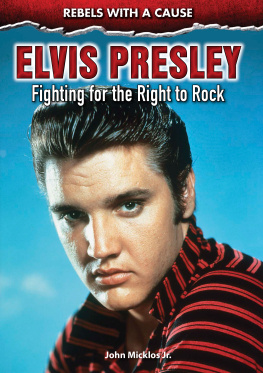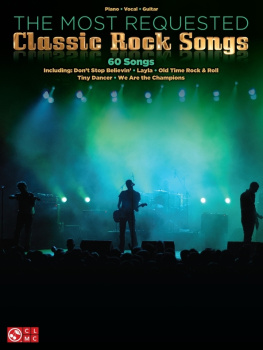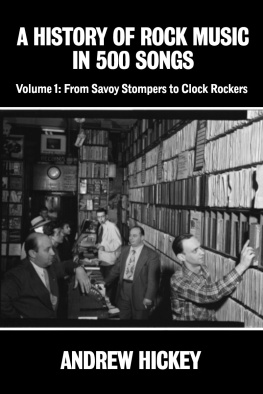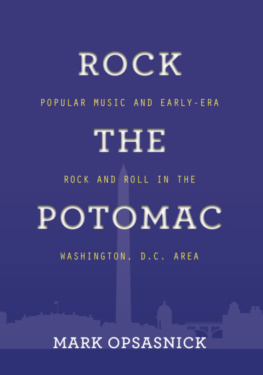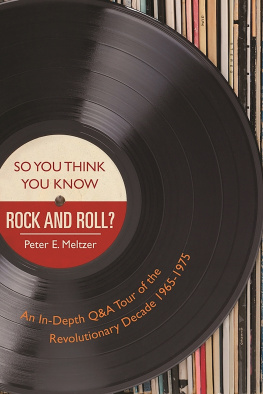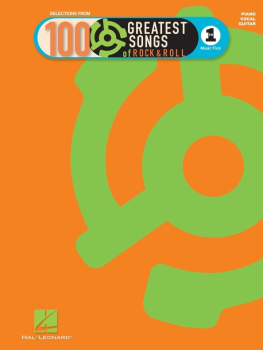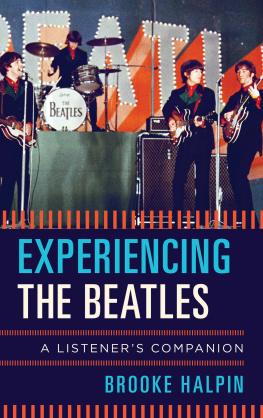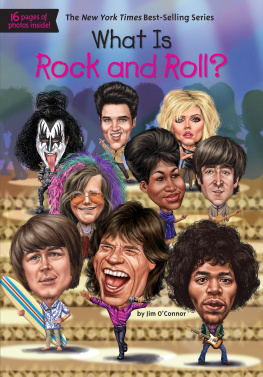The Classic
Rock and Roll Reader
Rock Music
from Its Beginnings
to the Mid-1970s
First published 1999 by
The Haworth Press, Inc., 10 Alice Street, Binghamton, NY 13904-1580
This edition published 2013 by Routledge
711 Third Avenue, New York, NY 10017
2 Park Square, Milton Park, Abingdon, Oxon OX14 4RN
Routledge is an imprint of the Taylor & Francis Group, an informa business
1999 by The Haworth Press, Inc. All rights reserved. No part of this work may be reproduced or utilized in any form or by any means, electronic or mechanical, including photocopying, microfilm, and recording, or by any information storage and retrieval system, without permission in writing from the publisher.
TR: 8.21.03
Cover design by Jennifer M. Gaska.
Library of Congress Cataloging-in-Publication Data
Studwell, William E. (William Emmett), 1936-
The classic rock and roll reader : rock music from its beginnings to the mid-1970s / William E. Studwell, D.F. Lonergan.
p. cm.
Includes an index.
ISBN 0-7890-0151-9 (he. : alk. paper).0-7890-0738-X (pbk. : alk. paper).
1. Rock musicHistory and criticism. I. Lonergan, D. F. (David F.) II. Title.
ML3534.S82 1999
CONTENTS
ABOUT THE AUTHORS
William E. Studwell, MA, MSLS, is Professor and Principal Cataloger at the University Libraries of Northern Illinois University in DeKalb. Mr. Studwell is the author of Barbershops, Bullets, and Ballads: An Annotated Anthology of Underappreciated American Musical Jewels, 18651918; College Fight Songs: An Annotated Anthology; Publishing Glad Tidings: Essays on Christmas Music; and State Songs of the United States: An Annotated Anthology (Haworth); as well as thirteen other books on music, including reference books on popular songs, national songs, Christmas songs, ballets, and operas. He has also written three books on cataloging and almost 340 articles on library science and music. A nationally known expert on carols, college fight songs, and Library of Congress subject headings, he has made approximately 425 radio, television, and print appearances in national, regional, and local media.
D. F. Lonergan, PhD, is Associate Professor and Reference Librarian in the Libraries of Northern Illinois University in DeKalb, Illinois. He is the author of nine journal articles and approximately seventy-five encyclopedia articles on anthropological subjects as well as popular music and rock and roll.
Before the mid-1950s, the most famous rock in music was perhaps Rock of Ages, the outstanding eighteenth-century hymn. The significance of the word rock in the hymn was to suggest strength and stability in times of trouble.
In contrast, the term rock in rock and roll had a much different meaning. When rock music burst on the American scene in the mid-1950s, there was nothing stable about it and many adults viewed the new type of music as troubling. Since rock had a heavier or stronger beat than its predecessors, the word rock could have reflected the increased hardness of the music. Yet the music of 1953 to the mid-1970s, the focus of this volume, was relatively soft in comparison with the various forms of hard rock that followed it, making earlier rock more of a sandstone rather than marble or granite. Also, since rock had a more active style than the majority of its predecessors, the work rock could refer to the energetic motions of its rhythms. At the same time, however, since rock music particularly appealed to younger people and since so many of its performers were teenagers and young adults, another famous song with rock in the title and in addition suggesting motion might be appropriateRock-a-Bye, Baby. But who could sleep with all that noise!
The authors of this volume have attempted to maintain the same playful and irreverent tone employed in the preceding paragraph throughout this set of essays on the classic or early rock period. The senior author was finishing senior high school when the first rock songs appeared, giving him a good perspective on the first decade or so of the period. The junior author was in junior high school in the mid-1960s, giving him a good perspective on the last decade or so of the period. In addition, the senior author, a cultural historian with ties to classical and other mainstream music, has approached the topic from one angle, that of a general music commentator. On the other hand, the junior author, an anthropologist with ties to folk music, looks at the topic from a different angle, more that of an intimate narrator of the periods musical phenomena.
The backgrounds and personalities of the authors combine to provide an informative yet quite readable and, it is hoped, entertaining survey of early rock in its cultural and historical context. Touching on the music that preceded early rock, the music that followed early rock, and the numerous nonrock songs that flourished during the classic rock period, a wide spectrum, yet in-depth view, of rock and its neighbors will be offered by means of well over 100 essays on various songs. Hundreds of rock and nonrock compositions will be covered in one way or another. In format and style, this book is similar to the senior authors related volume, The Popular Song Reader, though there is relatively little overlap with that publication. On the other hand, there is little similarity between this volume and other histories or surveys of rock music, including one with the title Rock of Ages.
Dance music has been a vital and active part of American popular culture throughout the twentieth century. Starting before the beginning of the century and continuing to about World War I, ragtime was the craze of the day. With the creation of Cecil Mack and Jimmy Johnsons Charleston in 1923, that dance became the fad for several years. And with the beginning of the swing era in the late 1920s, much of America either danced or listened to dance music played by big bands.
The swing era was a time for dancing. With increased emphasis on orchestration and larger instrumental ensembles than before, the songs of the swing or Big Band era, whether fast or slow, tended toward rhythms suitable for fun and romance on the dance floor. If you had a good beat, it wasnt necessary to have great lyrics. For instance, two of the finest pieces of the period, Glenn Millers Moonlight Serenade (1939), a very smooth slow composition, and Joe Garlands In the Mood (1939), a very active and playful composition, have lyrics that are seldom used. In fact, one of the top songs of the 1940s, Sy Olivers Opus One or Opus Number One (1944), not only doesnt have words but really doesnt have a title.
The big bands, led by famous musicians such as Duke Ellington, Count Basie, Benny Goodman, Tommy Dorsey, Harry James, and Glenn Miller, hit their peak in the late 1930s and early 1940s. After World War II they declined somewhat and after 1955, when Rock Around the Clock shocked the nation, were pushed well into the background by the loud and brash sounds of rock and roll. But the transition from swing to rock was not as drastic as it might appear. Swing, like rock, was frequently loud, often quite lively, and in many cases characterized by a strong beat. In the Mood, composed fourteen years before Rock Around the Clock was created in 1953, was in its way as rebellious as the later song, especially in the devil-may-care recording by Glenn Miller. That is why a New Years Eve retrospective on American dance music, broadcast in 1993 by a radio station in a major American city, blended together the rhythms of In the Mood and Rock Around the Clock in an effort to suggest the stylistic similarities. The shift from one song to another was smooth, natural, and almost friendly.


